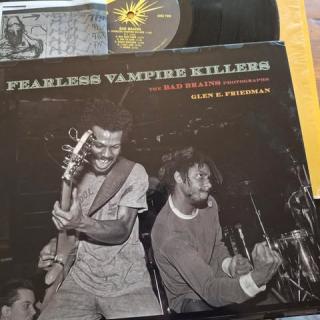Advertisement
Like many black people, I grew up knowing families in which the color of everyone’s skin was different, sometimes dramatically so. I also have people in my own family on both sides who at first glance, appear to be white, but who identify and were reared as black. There are six interracial marriages in my generation–I’m a Baby Boomer–and five of the couples have children and grandchildren, so clearly this will be our reality for some time to come.
As I was growing up I also learned the color descriptors—high yellow, cinnamon, red bone, coffee colored, blue black—the jump rope ditties, and was aware of the advantages light skin and “good” hair can present for black people. I didn’t dwell on it, though, and except for the occasional jokes about “must have been the milk man,” no one I knew did either.
However, last autumn in two of my African American history classes, several students shared that they were in multiracial families in which members did not share the same skin color. One student admitted it was a bone of contention in his family and sometimes caused hard feelings. He also said he knew his family loved him, but he sometimes felt like an adopted child who didn’t quite belong.
Those who identify as black have always run the gamut from chalk white to blackest onyx. But in America, the cleavage has always been race; therefore, skin color has taken on an unnatural and destructive role in the American pageant. Yet skin color is merely a biological adaptation over centuries. Human beings are darkest in the places where the rays of the sun are the strongest, and vice versa. Furthermore, the number of genes that determine skin color is more than one hundred, and scientists have barely scratched the surface in studying them.
In Same Family, Different Color, Tharps takes on the somewhat taboo story of colorism within families. She knows of what she speaks; she is a black American woman married to a Spaniard with a complexion like a glass of milk. Their three children are of different hues; two of them match the coloring of either parent, while a third is somewhere in between. Tharp points out that part of the surprise is that many interracial couples expect their children’s skin color will be a mixture of theirs; they don’t expect Jesse Jackson’s rainbow coalition. Tharp quotes the anthropologist Nina Jablonski, whose research and work focus on skin color. “When it comes to predicting the skin color of interracial children, it’s like playing genetic roulette. You never know what you’re going to get.”
Being color struck–that was the term for it when I was growing up–has historically been very damaging to the black community. After the Civil War and Reconstruction, African Americans lost the rights and privileges of citizenship as the country, but especially the states of the old Confederacy, swiftly moved to crush their dreams through legislation, economic reprisals, terrorism and racial etiquette. Many blacks with extraordinarily fair skin began passing; that is, they stepped over the color line and lived as white people. They had concluded that living as white would afford them the opportunities and rewards that black skin denied them. My students are often shocked by this. Why would people do this? I have to remind them of the pain and turmoil of the Jim Crow period. Perhaps in 2017, passing seems like treason, but people who took this drastic step could see no other path to a life worth living. And we will never fully know the psychic toll that hundreds of thousands of black people experienced by denying their true selves.
The Academy Award winning Kenyan Lupita Nyong’o–she of the ebony skin and bad-ass natural–has frequently spoken about her struggle to accept her dark skin. She is at peace with it now, and her honesty has inspired many young women to embrace their dark skin. She is a spokeswoman for Lancome, the French cosmetic company, and I’ve been slightly amused at the fashion and beauty industries who have now decided that jet black skin and kinky hair are not the deal breakers they were during my childhood. It’s as though every cosmetics company and fashion house wants to find a Lupita! For all of Lupita’s success, however, being dark skinned–especially for women!–is still quite an issue in the black community.
Tharps also reminds us that other races and ethnicities deal with the color issue. For example, in Japan there are a surfeit of products that promise to brighten and lighten the skin to the desired “milky white” that has long been coveted by so many Japanese women. Latinos, Mexicans, Cubans and other Asian communities also have fierce battles over skin color, per Tharp.
In Same Family, Different Colors, Tharps calls for an exploration into colorism in the white community; at this time, there have been few studies that do so. The problem there isn’t so much “I’m lighter than you, so I’m better.” The issue with whites is that they invented colorism, and have gone to the nth degree to reinforce that light skin is better. It would be fascinating to see studies about how white color prejudice helps white people decide who is and is not worthy.
The explosion in interracial marriages–this year is the fiftieth anniversary of Loving v Virginia (1967) which struck down laws against interracial marriages–and immigration, much of it from Africa and the Caribbean, show that America is never going back to a country based purely on whiteness. In 1903 the scholar and race man W. E. B. DuBois opined that the color line would be the problem of the twentieth century. Sometimes it appears we haven’t made much progress on the issue more than a century later.



